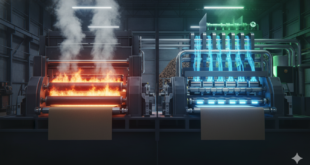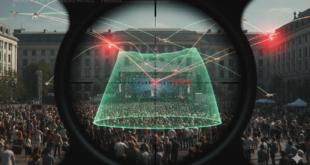🎥 Smarter Trash: How AI Is Revolutionizing Waste Management and Recycling
Explore how artificial intelligence is transforming the future of garbage—from robotic sorters to smart bins and circular economies.
As global populations rise and consumption surges, the world finds itself drowning in waste. Traditional methods of sorting, collecting, and processing garbage are no longer sufficient to keep pace with the growing environmental burden. But a silent revolution is underway—powered not by bulldozers and incinerators, but by algorithms and neural networks. Artificial intelligence (AI) is rapidly transforming waste management into a smarter, more efficient, and sustainable process.
From intelligent sorting robots to predictive analytics that optimize municipal garbage collection, AI is helping cities and industries reduce landfill use, recover more recyclables, and cut greenhouse gas emissions. The future of waste is automated—and that’s a good thing.
Every year, the world generates over 2 billion tons of municipal solid waste—enough to bury Manhattan under a mountain of trash 100 stories high. With projections pointing to 3.4 billion tons by 2050, waste management is at a tipping point. But a silent revolution is taking place inside recycling plants and garbage trucks across the globe. Artificial intelligence (AI), once associated mainly with high-tech industries, is now emerging as the unsung hero in transforming how we deal with the world’s growing garbage crisis—from reactive cleanup to proactive, data-driven resource recovery.
Why Traditional Waste Systems Are Crumbling
Today’s conventional waste management systems are overwhelmed. Manual sorting at Materials Recovery Facilities (MRFs) is both dangerous and inefficient. Workers must rapidly identify and separate recyclables on conveyor belts moving at breakneck speeds—often over 600 feet per minute. This high-pressure environment contributes to contamination rates as high as 25%, a problem that became global when China’s 2018 import ban on recyclables with more than 0.5% contamination caused waste systems to clog like blocked arteries. At the collection level, the situation isn’t much better. Most garbage trucks operate on fixed routes, collecting even half-empty bins. This outdated method results in nearly 40% of collections being unnecessary, wasting fuel and releasing 28 million tons of CO₂ annually. Compounding the issue is the absence of real-time data. Without digital insights, waste management decisions are largely guesswork, depriving operators of the vital “oxygen” AI needs to function effectively.
How AI is Reinventing the Waste Ecosystem
AI is transforming waste management in several breakthrough ways. Robotic sorters powered by machine learning and computer vision are dramatically improving the accuracy and speed of material separation. Technologies like EverestLabs’ RecycleOS and AMP Robotics identify up to 80 items per minute—twice the speed of a human—with 95% accuracy. One facility using Glacier’s AI found $900,000 annually in recoverable materials that were previously misclassified. Meanwhile, smart bins equipped with ultrasonic sensors, such as Routeware’s Pello, monitor fill levels and transmit real-time data to AI-based route optimization systems. These systems can cut collection frequencies by 40%, reduce emissions, and lower fuel costs by more than 13%.
AI is also proving indispensable in detecting contamination in waste streams. By identifying pollutants like plastic film hidden in paper or food residue in recyclables, operators can reduce labor costs and improve sorting quality. At Alameda County Industries, such contamination-focused AI systems cut labor costs by nearly 60% over three years. Consumer-facing tools like Trashbot now serve as digital recycling sheriffs in workplaces, correctly sorting discarded materials with near-perfect accuracy. Together, these innovations signal a shift from manual, error-prone processes to intelligent, scalable systems built for efficiency and sustainability.
To keep pace with rising waste volumes and increasing regulatory demands, waste management and recycling operators must embrace a trio of transformative technologies: smart sorting systems powered by AI, the Internet of Things (IoT), and blockchain. According to Pritesh Pattni, Chief Commercial Officer at ISB Global, these tools are essential for tackling the growing complexity of waste collection, processing, and reporting. AI and machine learning can significantly accelerate automated waste sorting, reducing bottlenecks and enabling continuous, around-the-clock operation with less human error. These smart systems can recognize and sort a wider range of materials with precision, helping facilities boost throughput while improving the quality of recovered recyclables.
AI in Action: Smarter Collection and Route Optimization
Municipal solid waste collection is a costly and carbon-intensive operation. Traditionally, garbage trucks run fixed routes on rigid schedules, often collecting half-full bins or skipping overflowing ones. AI is now helping cities streamline these processes through real-time data analysis and predictive modeling.
Using IoT-enabled bins equipped with sensors, waste collection companies can monitor fill levels across neighborhoods. AI algorithms analyze this data to design optimal collection routes, minimizing fuel use, labor hours, and emissions. Cities like Amsterdam and Seoul have already implemented AI-powered logistics systems that have cut operational costs and reduced truck traffic in urban areas.
AI-Powered Sorting: The Rise of Smart Recycling
One of the most transformative applications of AI in waste management lies in materials recovery facilities (MRFs), where recyclable materials are separated and processed. Traditional sorting is labor-intensive and error-prone—leading to contamination and lost value in the recycling stream. AI is changing this with astonishing precision.
Using computer vision and machine learning, AI-equipped robotic arms can now identify, classify, and sort materials like plastics, paper, metals, and glass at high speed. These smart systems analyze thousands of items per minute using advanced image recognition, distinguishing between recyclable and non-recyclable waste with over 90% accuracy. Some systems even detect subtle differences in plastic polymer types or food contamination levels—something that once required human oversight.
Companies like AMP Robotics and ZenRobotics are leading the way, deploying intelligent sorters in facilities across North America and Europe. The result? Cleaner recyclables, lower labor costs, and more materials being recovered instead of heading to landfills.
Detecting Waste Before It Happens: Predictive Waste Analytics
AI’s power isn’t just in sorting what we throw away—it’s in helping us throw away less. Predictive analytics tools powered by AI are helping manufacturers and cities anticipate waste generation trends before they occur. By analyzing consumption patterns, production cycles, and even weather data, these systems can forecast spikes in waste volumes or identify inefficiencies in industrial processes.
Retailers and restaurants, for example, are using AI to track and reduce food waste by adjusting procurement and inventory in real-time based on sales and spoilage predictions. This not only cuts costs but also reduces the environmental impact of organic waste, which contributes significantly to methane emissions from landfills.
Navigating the AI Waste Maze: Challenges Ahead
Despite the promise of artificial intelligence, the road to smarter waste management is far from smooth. One of the most pressing issues is data governance. As waste companies aggregate massive volumes of operational data into centralized “data lakes,” they risk exposing sensitive information to privacy breaches and regulatory violations. Eric Hansen, CIO of Waste Connections, puts it bluntly: “AI without data governance is anarchy.” To mitigate these risks, industry leaders are turning to secure architectures—like partitioned data domains that keep customer information within protected ecosystems.
Another significant barrier is cost. Robotic sorting systems from companies like AMP Robotics can cost around $500,000 per unit. While these investments often pay for themselves in under three years through savings on labor and landfill fees, the initial outlay is daunting for smaller municipalities and cash-strapped governments. The capital-intensive nature of this technology threatens to widen the gap between affluent urban centers and underserved regions that could benefit most from better waste management.
Adding to the complexity is the carbon paradox. Training advanced AI models requires considerable computational power, which consumes vast amounts of electricity—enough to power hundreds or even thousands of homes. This energy burden stands in stark contrast to the environmental goals AI seeks to advance. However, forward-thinking companies are beginning to close this loop. By quantifying the emissions avoided through smarter routing, reduced truck mileage, and more efficient sorting, some firms are offsetting AI’s carbon footprint with operational sustainability gains.
The challenges go beyond infrastructure and energy. In many developing nations, a large share of waste management relies on informal labor markets. Over-automation could displace workers who depend on these jobs for survival. Without thoughtful implementation, AI risks becoming a tool of exclusion rather than inclusion. Moreover, deploying and maintaining AI systems requires skilled professionals—highlighting the urgent need for workforce training programs and inclusive policy frameworks.
Still, the momentum behind AI in waste management is unmistakable. As hardware becomes more affordable, cloud-based platforms simplify deployment, and public demand for environmental accountability grows, the pace of integration is set to accelerate. With strategic investment, clear policy frameworks, and robust public-private partnerships, AI can serve as a critical bridge between global climate goals and local waste challenges. By aligning technological innovation with inclusive implementation, we have the opportunity to transform AI from a niche innovation into a foundational tool for building cleaner cities, empowering communities, and advancing truly circular economies.
Global Leaders Pioneering the Trash Tech Revolution
Several countries are already leading the way in AI-enabled waste management. South Korea and Germany, for example, have instituted national AI mandates that have driven recycling rates to 60%, far exceeding the U.S.’s stagnant 24%. Amsterdam is taking a futuristic approach by using AI to integrate waste data with urban planning—strategically placing recycling hubs where population growth is expected to peak by 2030. In Wyoming, TerraPower is deploying AI to help convert waste into syngas through advanced reactors, paving the way for zero-emission, AI-directed waste-to-energy solutions.
The Future: From Smart Bins to Circular Economies
AI doesn’t just make waste management more efficient—it helps drive the shift toward a circular economy, where resources are reused, remanufactured, or recycled continuously. By providing unprecedented visibility into waste streams, AI helps governments and businesses better understand material flows and design systems that keep products in circulation longer.
Some startups are using AI to assess the lifecycle of products, recommending more sustainable packaging or materials at the design stage. Others are using machine learning to trace illegal dumping, monitor ocean plastic accumulation, or detect microplastics in wastewater—all contributing to smarter environmental stewardship.
Looking ahead to 2030, AI will enable profound shifts in how we handle waste. We can expect the rise of “Material DNA” databases that log the chemical fingerprints of plastics, enabling infinite recycling without degradation. Blockchain-integrated recycling systems could automatically reward consumers for proper disposal, with AI vision systems tracking and verifying their actions. Perhaps most excitingly, AI-guided pyrolysis plants may transform up to 90% of landfill-bound trash into hydrogen fuel, tapping into a potential $200 billion market. These systems will not just manage waste—they’ll extract value from it.
“We’re not just automating trash—we’re building an immune system for the planet,” says Rebecca Hu, CEO of Glacier. Her sentiment captures the essence of this AI-powered transformation: one where waste managers evolve into conductors of circular economies. As we race toward the critical 2030 deadline to double global recycling rates, AI may prove to be the lifeline that enables cities to do more than just survive the waste crisis—it could empower them to thrive.
In the age of overflowing landfills and climate urgency, smarter waste management isn’t optional—it’s essential. AI offers the tools to turn our trash crisis into a triumph of innovation, efficiency, and sustainability. As machines learn to handle our waste, perhaps we’ll learn to produce less of it.
 International Defense Security & Technology Your trusted Source for News, Research and Analysis
International Defense Security & Technology Your trusted Source for News, Research and Analysis




